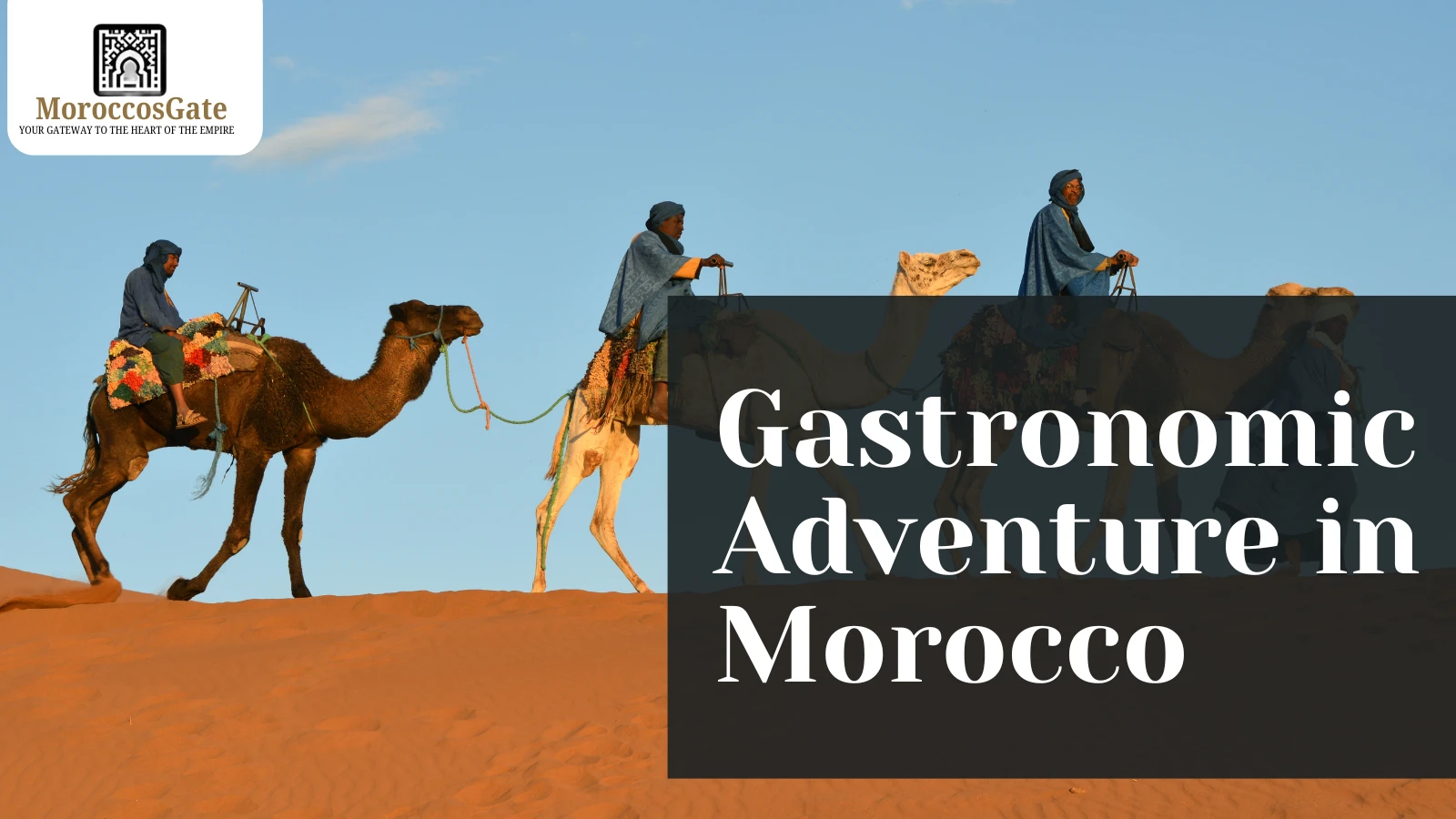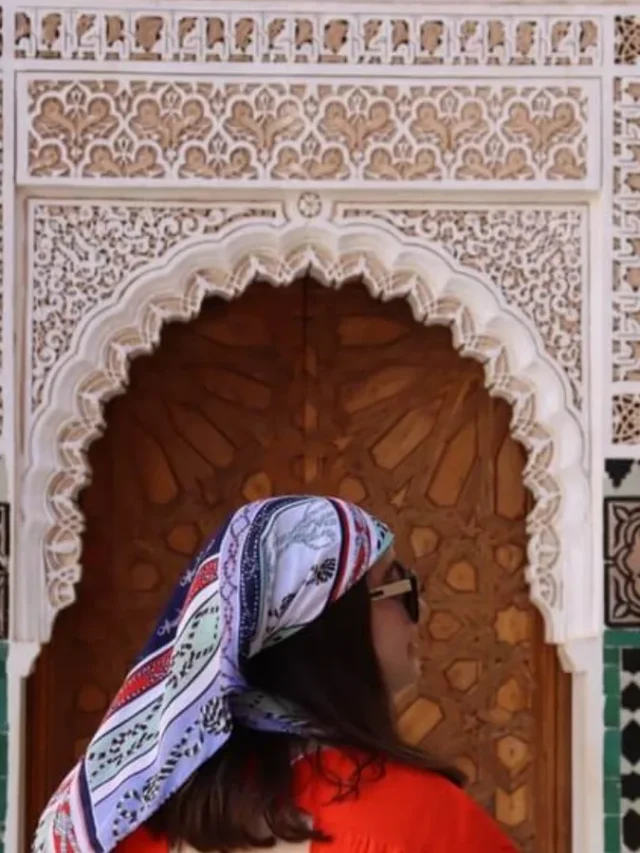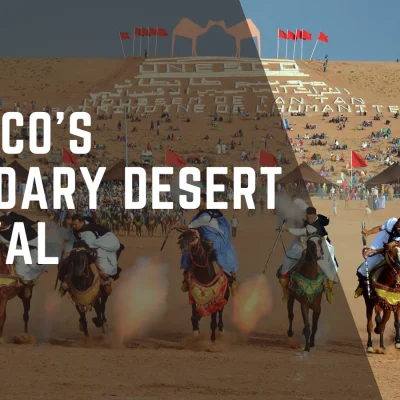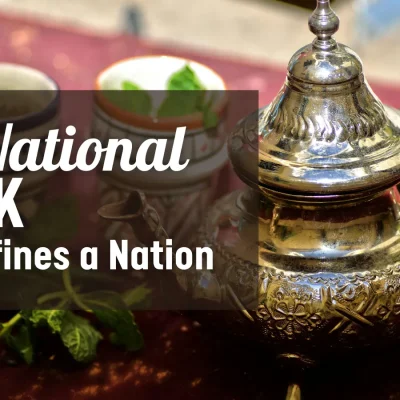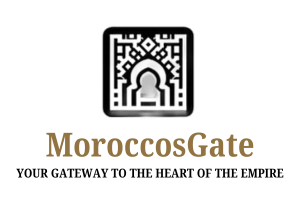A Gastronomic Adventure in Morocco: A Delight for the Senses
Writer: Morocco’s Gate Team
When you enter any Moroccan medina, your senses are instantly taken on a thrilling and exciting journey. It’s the vivid tapestry of hand-woven rugs, the shimmer of elaborate lanterns, or the far-off sound of a prayer call. It’s the scent, though, above everything. The sweet scent of mint tea poured from a silver teapot, the smoky char of grilling meats from a busy market stand, and the delicious cloud of steam rising from a tagine pot.
Morocco promises to be a feast for the soul as well as the eyes.
At Morocco’s Gate, we think that you have to taste a nation to really understand it. You have to partake in its tea, share its bread, and enjoy the recipes that have been handed down through the years. This is an invitation to go on a culinary adventure, not just a list of foods. Let us, your local guides, show you the real essence of Moroccan cuisine by guiding you through the busy souks and secret passageways. Forget the tourist traps.
Moroccan cuisine is a vibrant and diversified culinary tradition, influenced by Berber, Arab, Andalusian, and French culinary practices.
Why Moroccan cuisine is different
- Morocco’s spice palate emphasizes warmth over heat. Consider saffron (from Taliouine), cumin, ginger, turmeric, cinnamon, paprika, and the renowned house blend, ras el hanout.
- Savory meets sweet: Lamb with almonds and prunes, chicken with apricots, and pigeon pastilla topped with cinnamon and sugar are all examples of meat and fruit falling in love.
- Preserved brightness: Chermoula (a marinade of herbs, garlic, and chile) and preserved lemons, along with briny olives, give dishes a vibrant appearance.
- Slow and soulful: Tanjia and tagines add a rich, fragrant flavor to meats and vegetables slowly.
- Khobz, the nation’s daily bread, serves as a spoon, a scoop, and a place at the table.
Are you prepared to take off? With our help, find the ideal flight! Click here👇
The Cornerstones: Moroccan Table Icons
Moroccan cuisine has gained international recognition because to these delicacies. They are celebrations of patience, camaraderie, and the ideal harmony of spice, savory, and sweet flavors.
1. Tagine: Moroccan Cooking’s Soul
Let’s begin with the unchallenged monarch. Both the conical earthenware pot and the delicious, slow-simmering stew that is prepared inside it are referred to as tagines. The unusual shape of the pot is a brilliant idea; it retains steam, which transforms into condensation, basting the contents and producing extraordinarily tender meat and vegetables that are flavored with a variety of spices.
- Why is it unique? The layering of flavors is where the magic lies. Savoury meat, sweet fruit, and warming spices like turmeric, ginger, and cinnamon are all expertly balanced in a traditional lamb tagine with prunes and apricots. A chicken tagine with olives and preserved lemons is a delightfully aromatic, salty, and zesty dish. A vegetable tagine full of fresh fruit, chickpeas, and aromatic herbs is a filling and substantial treat for vegetarians.
- How to consume it: Usually positioned in the middle of the table, tagine is a communal meal. Traditionally, it is consumed without cutlery, with the rich, flavorful sauce, veggies, and delicate meat being scooped up with slices of crispy Moroccan bread (khobz).
2. The Friday Feast: Couscous
Couscous is a weekly tradition and much more than just a basic side dish. Families get together after midday prayers to share a huge platter of couscous, which is traditionally made on Friday, the Muslim holy day.
The incredibly fluffy and light steamed semolina grains serve as the base. It takes a lot of work to prepare it the traditional way, which includes several steps of steaming and hand-rolling to make sure every grain is delicate and distinct. A substantial seven-vegetable stew, tender meat (often lamb or chicken), and a sweet, caramelized onion and raisin concoction known as tfaya are then placed on top of this fluffy pile.
- The Experience: It is a genuine honor and a glimpse of Moroccan hospitality to be asked to share a Friday couscous. The dish’s enormous size and generosity say a lot about the value of community and family.
Street Food Delights: The Medina’s Lifeblood
You have to go to the streets to experience Moroccan Cuisine in its authentic, everyday form. A crucial component of the experience is the aromas and sizzling sounds coming from food vendors in squares like Djemaa el-Fna in Marrakech.

3. M’smen & Harcha: The Champions’ Breakfast
Get your day off to a local start. M’smen is a crispy and chewy pan-fried flatbread that is flaky and layered. It is cooked till golden after being folded into a square. Savor it on its own or spread it with honey, soft cheese, or Amlou, a delectable almond butter from Morocco. Its rustic cousin is harcha, a pan-fried semolina bread that pairs well with butter and jam and has a somewhat grainy, biscuit-like texture.
4. Brochettes: The Souk’s Sizzle
The seductive smoke of grilling meats permeates the air as darkness draws closer. Kebabs, or brochettes, are a mainstay. There are stands offering kefta (minced lamb or beef seasoned with cumin, paprika, and fresh herbs), flavorful chicken, or soft, spice-rubbed lamb on skewers. This is the epitome of fast cuisine, served simply with bread with grilled tomatoes and onions on the side.
5. Babbouche: An Exciting Treat
A bowl of babbouche is a must-try for bold eaters. These snails are cooked in a flavorful broth that has been seasoned with a proprietary blend of more than 15 spices, including as mint, licorice root, and thyme. The broth is thought to have healing qualities by the locals. They are served by vendors from big, hot cauldrons. After removing the snails from their shells with a toothpick, take a drink of the tasty soup.
Get There More Cheaply and Quickly! Click here👇

The Ritual of Tea and the Art of Pastry
Moroccans are known for their exquisite pastries and desserts, which are the result of their renowned sweet taste. The national beverage, mint tea, is always served with this.
6. Pastilla (also known as B’stilla): A Masterwork of Sweet and Savory
Pastilla is the meal that best captures the richness and heritage of Moroccan cooking. The flavors and textures of this amazing pie dance delicately together. It consists of layers of phyllo-like paper-thin warqa pastry filled with slow-cooked chicken or pigeon shreds seasoned with cinnamon, ginger, and saffron. A crispy concoction of sugar, orange blossom water, and toasted almonds is then put over this flavorful filling. Dusted with cinnamon and powdered sugar, the entire pie is baked until golden. The end effect is a memorable blend of crunchy, sweet, savory, and fragrant flavors.
7. “Gazelle Horns” by Kaab el Ghazal.
Any celebration must have these crescent-shaped sweets. A soft, aromatic almond paste flavored with cinnamon and orange blossom water is stuffed into a delicate, thin pastry. They go well with a drink of mint tea and are sophisticated without being too sweet.
8. Tea with Moroccan Mint: “Whisky Berbère”
In Morocco, mint tea is more than just a beverage; it’s a representation of friendliness, hospitality, and custom. Often referred to as “Berber Whisky,” it is served for any occasion and at any time of day. In and of itself, the preparation is a ritual. A big amount of sugar and loads of fresh spearmint leaves are used to make green gunpowder tea; don’t be afraid to request less if you’d like. By pouring the tea into tiny, delicate cups from a height, the host aerates the tea and produces a fine froth on top, called the “crown.” It is considered rude to decline a glass of tea, so take a seat back, unwind, and savor this cozy, delightful embrace of Moroccan culture.
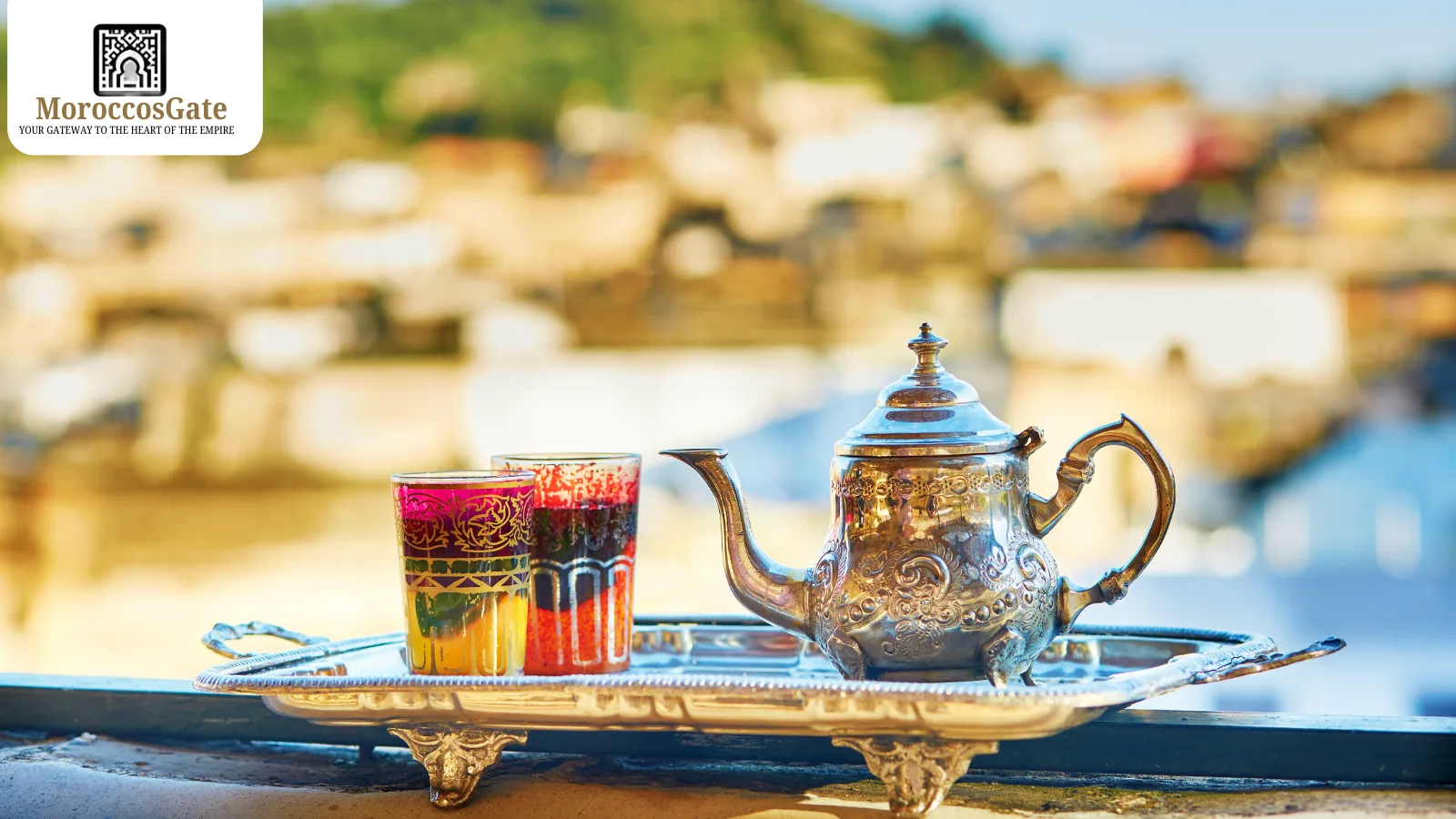
Undiscovered Treasures & Local Specialties
You’ll find that Moroccan Cuisine is really varied and that every region has its own specialties if you venture off the usual route.
9. Tanjia: Marrakech’s Bachelor’s Pot
Tanjia, a genuine Marrakech delicacy, is as much about the preparation technique as the actual meal. Usually cooked with lamb or beef, cumin, preserved lemons, and a lot of saffron, it’s a rich stew. After being sealed in a clay urn, also known as a tanjia, the ingredients are transported to the nearby hammam, a public bathhouse, where they are slowly cooked for hours in the hot ashes that heat the baths. The end product is meat that melts in your mouth due to its incredible tenderness.
10. Essaouira sardines
Grilled sardines are the highlight of the fresh seafood that is so well-known in the seaside resort of Essaouira. You can see fishermen roasting their daily catch over open fires if you go down to the harbor. The sardines are served hot after being lightly seasoned with a marinade made of fresh herbs, garlic, lemon juice, and spices, known as chermoula. The taste of the Atlantic is straightforward, rustic, and remarkably fresh.
Are you fixated on beauty? Go here!👇
Moroccan cold and hot salads and appetizers
Moroccan cuisine, which is spicy, smokey, and incredibly soothing, frequently starts with a vibrant procession of small plates.
- Zaalouk: a soft, spoonable, smoked eggplant-tomato salad with olive oil on the side.
- Taktouka: A peppery relative of zaalouk, it consists of roasted tomatoes and green peppers seasoned with paprika and garlic.
- Cumin and carrot: Cumin, coriander, and lemon are combined with softly cooked sweet carrots.
- Bakoula: Spinach or marshmallow greens accompanied by olives and preserved lemon.
- Briouat: Triangles of crispy warqa stuffed with cheese or herbs and seasoned meat.
- Bissara: A velvety split fava bean soup accompanied with olive oil, cumin, and paprika.
Using street food to organize your day
- Sfenj: Sugar-dusted doughnuts with a crisp edge and a fluffy texture. Joyful breakfast with mint tea.
- The combination of msemen (flaky) and harsha (semolina skillet bread) with honey and butter or stuffed with onions and spices is a hot griddle scent that you will always pursue.
- Brochettes are skewers, usually made of lamb or chicken, that are roasted over coals and seasoned with salt and cumin.
- Babbouche, or snail soup, is a spicy, herbal broth that is both healthy and surprisingly addictive.
- Sardines can be sandwiched with chermoula or fried in semolina.
- Avocado-almond smoothie: A North African milkshake that is thick, frosted, and subtly sweet.
- A straightforward street dessert that is distinctly Moroccan is orange and cinnamon.
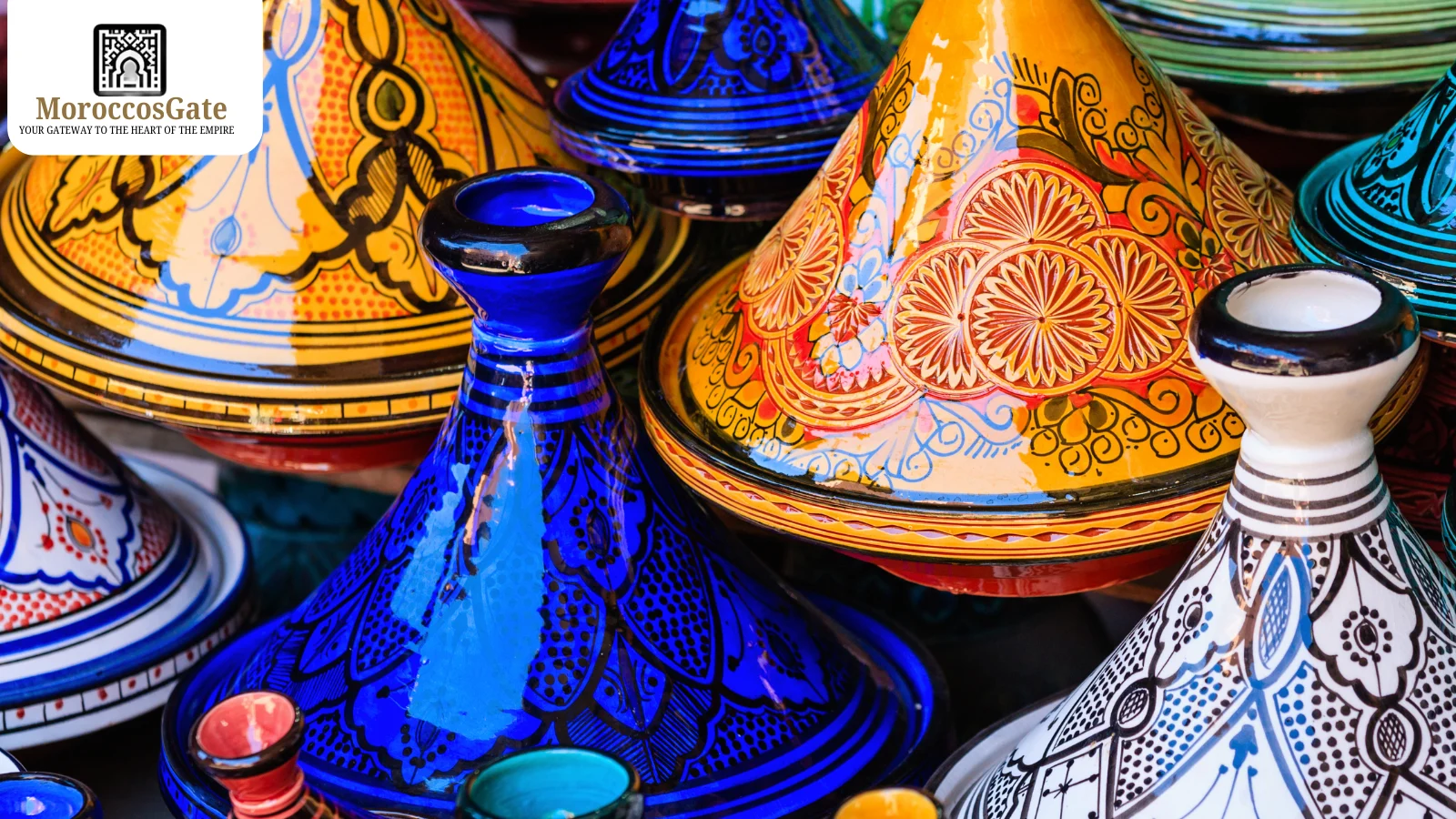
Notes about being gluten-free, vegan, and vegetarian
- Easy for vegetarians. There are plenty of salads, lentil soups, zaalouk, taktouka, bissara, and tagines with chickpeas and seasonal vegetables.
- Vegan: Request oil rather than butter; stay away from smen. Couscous with vegetable broth and vegetable tagines are popular.
- Gluten-free: Many foods, such as meats, salads, and tagines, are inherently gluten-free.
- Gluten is present in bread and wheat-based pastries; couscous is made from wheat; if possible, choose maize or millet couscous.
Recipes from Morocco’s Gate: chermoula marinade (for chicken, fish, or vegetables)
- One cup of finely chopped parsley and two cups of fresh cilantro
- Four minced garlic cloves
- Two teaspoons of ground cumin
- Two teaspoons of sweet paprika
- 1 tsp harissa or 1/2 tsp chili flakes (to taste)
- One lemon’s juice and zest
- One-third cup of olive oil
- One tsp each of salt and black pepper
- Give the fish 30 minutes to marinate, the chicken 2–4 hours, and the vegetables 30–60 minutes.
Morocco’s Gate recipes: Home blend, or quick ras el hanout
2 teaspoons of cumin, 2 teaspoons of coriander, 1 teaspoon each of cinnamon, 1 teaspoons of ginger, 1 teaspoons of turmeric, and 1 teaspoons of sweet paprika, 1/2 teaspoon each of cardamom, 1/2 teaspoons of nutmeg, and 1/4 teaspoons of clove, and a pinch of crushed fennel or anise. A pinch of dried rose petals is optional.
Combine and keep tightly sealed. Use 1 tsp for a saucepan of vegetables or 1-2 tsp per pound (450 g) of protein.
Using a Dutch oven for a weeknight chicken tagine
- In olive oil, sauté one sliced onion. Add three minced cloves of garlic.
- Add 1/2 tsp ginger, a pinch of cinnamon, and 1 tsp each of cumin, paprika, and turmeric.
- Add a handful of green olives, one cup of chicken stock, six to eight bone-in chicken thighs, and one preserved lemon (rind only, diced).
- Simmer until tender, covered, on low, 35 to 45 minutes. Add chopped parsley or cilantro and a squeeze of lemon to finish.
- Serve with warm flatbread or khobz. US/UK: use green olives or pitted Castelvetrano; canned preserved lemon is excellent.
Vegetable couscous (always fluffy)
- Combine one tablespoon of olive oil, one teaspoon of salt, and two cups of couscous.
- Pour two cups of mildly spiced broth (carrot, onion, cumin, and turmeric) over the couscous and cover for ten minutes.
- For added fluff, use a fork to fluff it up and steam it for 10 minutes in a cheesecloth-lined colander over a simmering pot.
- Add a drizzle of broth, a scattering of toasted almonds and raisins, and stewed vegetables (carrot, zucchini, chickpeas, cabbage, and squash) on top.
Unlock Special Hotel Offers and Create Memorable Travel Experiences. Go here!👇
Festive and seasonal notes
- Ramadan: Chebakia, briouats, and a revolving cast of tagines are served after evening meals of dates, milk or juice, and harira (tomato-lentil-chickpea soup).
- Weddings and Eid: sumptuous and abundant salads, mechoui, almond cakes, and pastilla.
A five-point itinerary for tourists visiting any Moroccan city
- Breakfast consists of mint tea or café nous-nous (half coffee, half milk); sfenj or msemen with honey.
- At midday, there will be a kefta tagine to share together with zaalouk and taktouka with khobz.
- Snack: An avocado-almond smoothie or freshly squeezed orange juice.
- Supper will be chicken tagine with olives and preserved lemon, served with cumin-topped carrots.
- Ghriba or oranges with cinnamon—and another cup of tea—make for a sweet conclusion.
For readers in the US and the UK: where to locate ingredients and how to replace them
- Lemons can be preserved by Middle Eastern/North African merchants, international aisles, or by making your own (lemons + kosher salt + 3–4 weeks).
- Quick tip: marinate in lemon juice, olive oil, and a teaspoon of salt for 24 hours after thinly slicing fresh lemon peel and blanching it for 1 minute. Bright and fragrant, but not quite the same.
- Ras el hanout: Look for blends with warm spices and flowery overtones; avoid blends with extra sugar or salt. Use the above quick blend if everything else fails.
- Harissa: Taste first—heat varies greatly—but tubes or jars are acceptable.
- Warqa pastry: In the US and the UK, use filo or phyllo instead; stack sheets for strength and brush with butter.
- Tagine vessel: Place a heavy-lidded pan or Dutch oven on low heat. Use a diffuser on stovetops for clay tagines.
Create a Moroccan cuisine in your house.
- Spread for starters: khobz, carrot salad, olives, taktouka, and zaalouk.
- Main: Select one tagine (either lamb-prune-almond or chicken-lemon-olive) and seven-vegetable couscous.
- Side: Kefta brochettes or briouat (meat or cheese).
- Dessert: Ghriba biscuits or baghrir with honey-butter.
- Drink: Fresh orange juice with a dash of orange blossom water or mint tea.
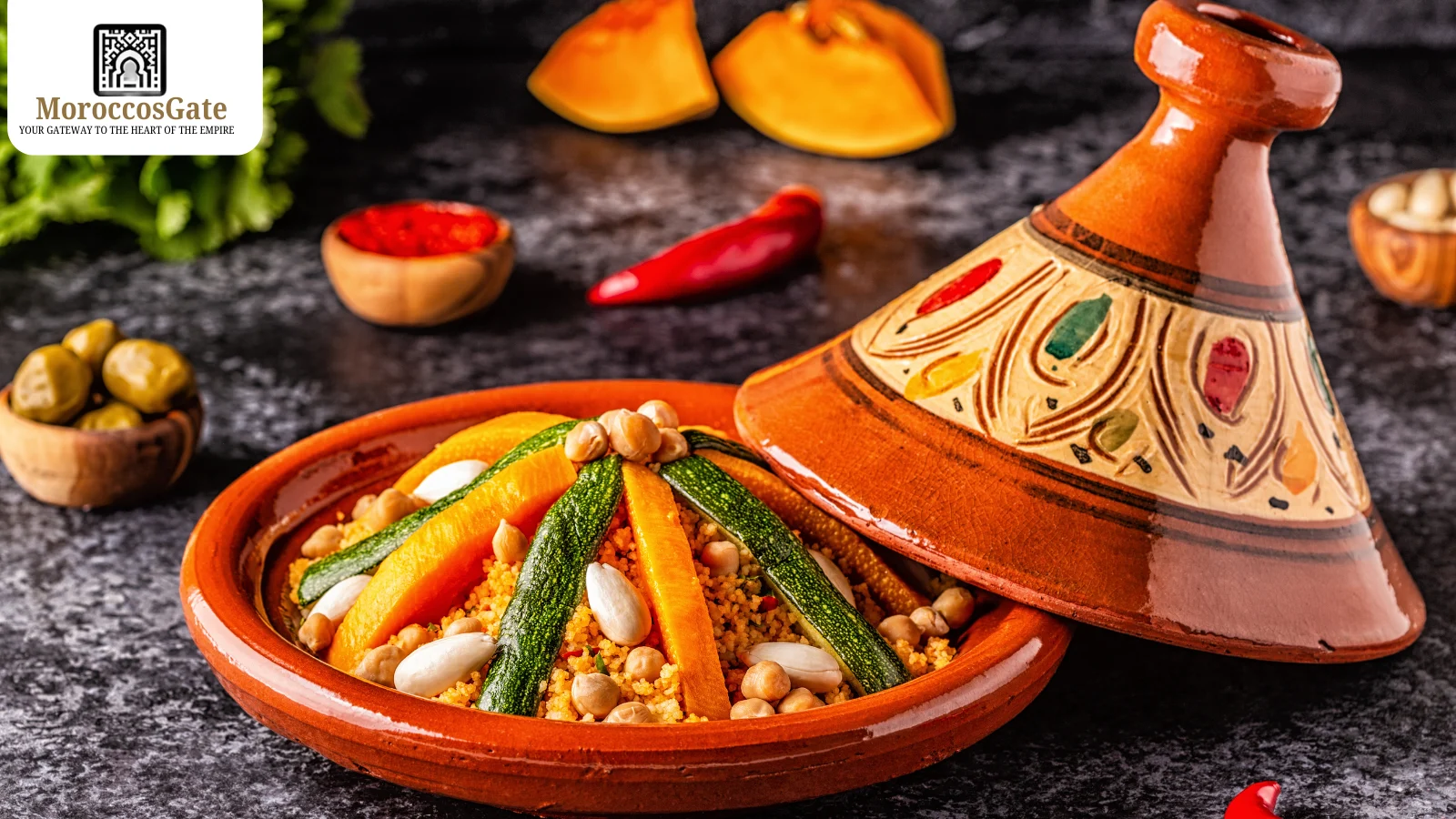
Seasonality and sustainability
Moroccan cuisine is extremely seasonal. Sardines are a sustainable mainstay on the Atlantic coast, tomatoes are at their best in the summer, and carrots are sweeter in the winter. Not only does eating what’s in season taste better, it’s also the Moroccan way.
Composed by Morocco’s Gate Team
From traditional tagines and couscous to street food and desserts, we are enthusiastic about showcasing the tastes, heritage, and friendliness of Moroccan cuisine. Comments or queries? Use our contact form to introduce yourself.
Try Morocco for Yourself: A Culinary Journey Is Awaiting You
It’s one thing to read about the exquisite pastries, searing brochettes, and fragrant tagines. However, you must try Moroccan Cuisine for yourself to fully grasp its essence.
We at Morocco’s Gate would like to take you on this tour. Our carefully planned tours are intended for inquisitive tourists and ardent foodies who wish to go further. We can create a customized itinerary that centers your journey around food and introduces you to the most genuine Moroccan culinary experiences.
Ready to Feel Morocco’s Cultural Heartbeat?
Morocco whispers its stories in every alleyway, market, and mountain pass. Let Morocco’s Gate guide you to its soul.
Book Your Authentic Cultural Journey Today →
Connect deeply. Experience authentically. Remember forever.

